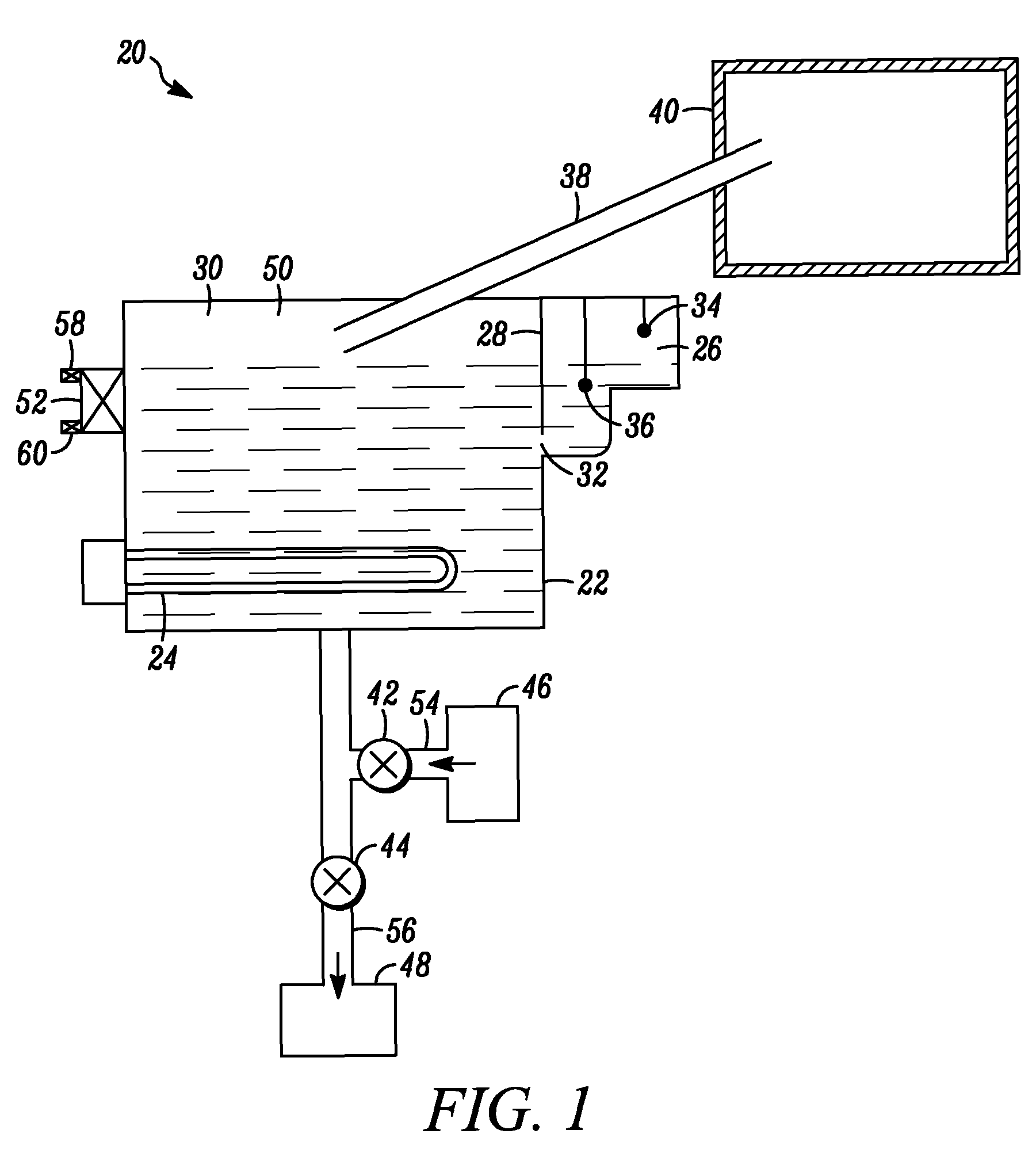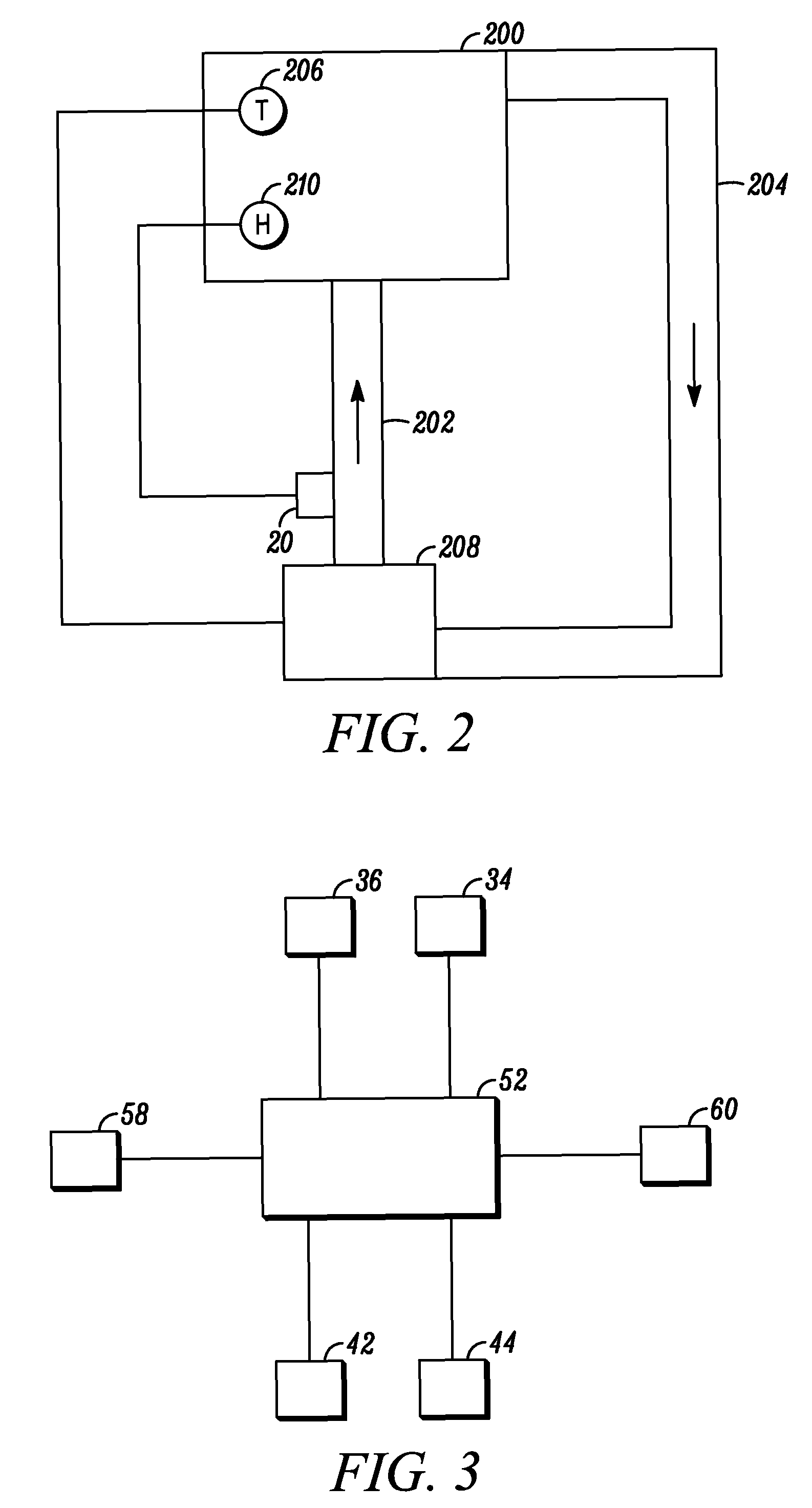Water level sensor for steam humidifier
a water level sensor and humidifier technology, applied in the direction of heating types, coupling device connections, instruments, etc., can solve the problems of water damage to the structure, unhealthy conditions in the building, and liquid water within the duct can create a number of serious problems,
- Summary
- Abstract
- Description
- Claims
- Application Information
AI Technical Summary
Benefits of technology
Problems solved by technology
Method used
Image
Examples
Embodiment Construction
[0022]The present invention is applicable to water level sensors for steam humidifiers, and more particularly tank heater type humidifiers. Water level sensors of this type are particularly useful in the context of tank heater type humidifiers capable of sensing at least two different water levels.
[0023]In a tank heater type humidifier, heat is generated within a tank of water, causing the water to boil and steam to be generated. The tank of the tank heater type humidifier needs to be filled with water, and as steam is generated, the water that is boiled off needs to be replaced. In order to properly control the filling of the tank, it is necessary to sense the water level in the tank. A variety of water level sensors exist. For example, float sensors are used in some humidifiers. However, water level sensors are preferably highly reliable, because a failure of a water level sensor can cause overfilling or under-filling of a tank, leading to failures of the humidifier. Furthermore, ...
PUM
 Login to View More
Login to View More Abstract
Description
Claims
Application Information
 Login to View More
Login to View More - R&D
- Intellectual Property
- Life Sciences
- Materials
- Tech Scout
- Unparalleled Data Quality
- Higher Quality Content
- 60% Fewer Hallucinations
Browse by: Latest US Patents, China's latest patents, Technical Efficacy Thesaurus, Application Domain, Technology Topic, Popular Technical Reports.
© 2025 PatSnap. All rights reserved.Legal|Privacy policy|Modern Slavery Act Transparency Statement|Sitemap|About US| Contact US: help@patsnap.com



